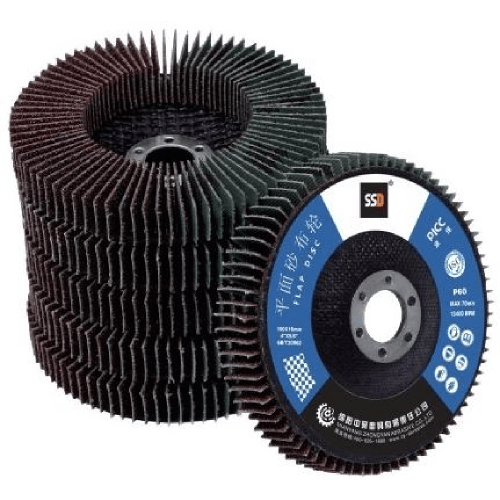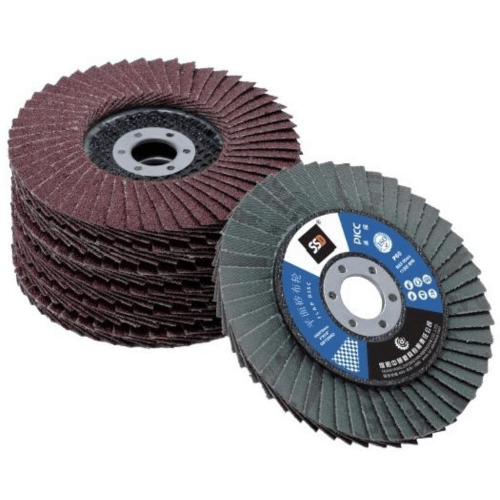How to Properly Use and Maintain Flap Wheels for Optimal Performance
Flap wheels are versatile tools in workshops, garages, and factories, used for grinding, smoothing, and polishing metal, wood, and plastic. But to get the best results—clean finishes, long tool life, and safe operation—you need to use and maintain them correctly. Whether you’re a DIY enthusiast or a professional, following these steps will ensure your flap wheels work efficiently and last longer. Let’s break down how to use flap wheels properly and keep them in top shape.
Choosing the Right Flap Wheels for the Job
Before using flap wheels, pick the right one for your task. Using the wrong type can lead to poor results or damage. Here’s what to consider:
- Abrasive material: Aluminum oxide works for general metal and wood. Zirconia alumina is better for tough materials like stainless steel. Silicon carbide is best for soft metals (aluminum) or plastic.
- Grit size: Coarse grit (36–80) removes rust or thick paint. Medium grit (120–180) smooths rough surfaces. Fine grit (240–400) preps for painting or polishing.
- Size: Small wheels (1–2 inches) fit tight spots (like wheel wells). Medium wheels (3–4 inches) handle most jobs (fenders, doors). Large wheels (5+ inches) speed up work on big surfaces (truck beds).
- Density: Spiral-wound (loose) flap wheels flex for curves. Straight-wound (tight) ones are stiffer for flat surfaces.
Matching the flap wheel to your material and surface ensures you remove material efficiently without scratching or over-grinding.
Step-by-Step Guide to Using Flap Wheels
Using flap wheels correctly prevents mistakes and ensures a smooth finish:
1. Prepare the Work Area and Tool
- Secure the workpiece: Clamp small items (like a metal bracket) to a workbench. For large parts (car fenders), use a stand to keep them steady. A moving surface can cause the flap wheel to catch, leading to uneven grinding or injury.
- Check the power tool: Flap wheels work with angle grinders or die grinders. Ensure the tool is clean and in good condition. Adjust the speed to match the flap wheel’s rating (usually 10,000–15,000 RPM). Too fast can overheat the wheel; too slow reduces efficiency.
- Attach the flap wheel properly: Tighten the wheel securely to the tool’s spindle. A loose wheel can wobble, causing vibration and uneven wear.
2. Use the Right Technique
- Start slow: Hold the tool with both hands for control. Let the flap wheel touch the surface gently—don’t press hard. Let the wheel’s weight do the work.
- Keep it moving: Never hold the flap wheel in one spot. Move it in small, overlapping circles or back-and-forth strokes. This prevents overheating and ensures even material removal.
- Angle matters: Hold the tool at a 15–30° angle to the surface. A steeper angle (closer to 90°) removes more material but can leave deep scratches. A shallow angle is better for finishing.
- Work in stages: Start with a coarse grit to remove rust, paint, or rough edges. Then switch to medium grit to smooth scratches, and finish with fine grit for a polished surface. Wipe away dust between stages with a tack cloth.
3. Avoid Common Mistakes
- Don’t over-press: Pressing hard wears out flaps quickly, creates excess heat (which can warp metal), and leaves uneven marks. Light pressure works best.
- Don’t skip grits: Jumping from coarse to fine grit skips the step of smoothing deep scratches, which will show through paint or polish.
- Don’t use worn-out wheels: When flaps are less than half their original length, they can’t grind evenly. Replace them to avoid poor results.
Safety Tips for Using Flap Wheels
Flap wheels spin fast and throw debris, so safety is critical:
- Wear protective gear: Safety glasses to block flying grit, a dust mask or respirator to avoid inhaling metal dust, gloves to protect hands from sharp edges, and hearing protection (power tools are loud).
- Clear the area: Keep bystanders away, and remove flammable materials (rags, fuel) from the workspace—metal dust can spark.
- Inspect the wheel first: Check for loose flaps, cracks, or damage before use. A damaged wheel can break apart during operation.
- Turn off the tool when not in use: Unplug or disconnect the power source when changing wheels or taking a break.

Maintaining Flap Wheels for Longer Life
Proper maintenance keeps flap wheels working well and extends their lifespan:
- Clean after use: Tap the wheel lightly against a hard surface to shake off dust (wear gloves to avoid sharp grit). For clogged wheels (covered in material), use a wire brush to remove buildup—this restores cutting power.
- Store correctly: Hang flap wheels on a rack (don’t stack them) to prevent flattening or damaging flaps. Keep them in a dry area—moisture can loosen glue holding flaps to the core.
- Avoid overuse: Replace wheels when flaps are worn down to 1/3 their original length. Worn flaps leave uneven scratches and require more pressure to work, wasting time.
FAQ
How do I know when to replace my flap wheel?
Replace it when flaps are thin, worn unevenly, or no longer remove material effectively. Worn wheels leave scratches and require more effort to use.
Can I use the same flap wheel for metal and wood?
It’s not recommended. Metal dust can clog the wheel, reducing its effectiveness on wood. Use separate wheels for different materials.
Why is my flap wheel getting hot?
Over-pressing, running at too high a speed, or holding it in one spot causes overheating. Let the wheel cool, adjust speed, and use lighter pressure.
How do I prevent flap wheels from clogging?
Use a coarser grit for soft materials (like aluminum), which clogs less easily. Clean the wheel regularly with a wire brush, and avoid pressing too hard.
Can I sharpen a dull flap wheel?
No, but you can clean it to remove debris. If the abrasive grains are worn, the wheel is no longer effective and should be replaced.
Is it safe to use a flap wheel on curved surfaces?
Yes, but use a spiral-wound (flexible) wheel. Move slowly and keep the wheel moving to avoid flat spots.
How long should a flap wheel last?
With proper use, a medium-sized aluminum oxide wheel lasts 1–3 hours for general tasks. Zirconia or ceramic wheels last 2–3 times longer.


